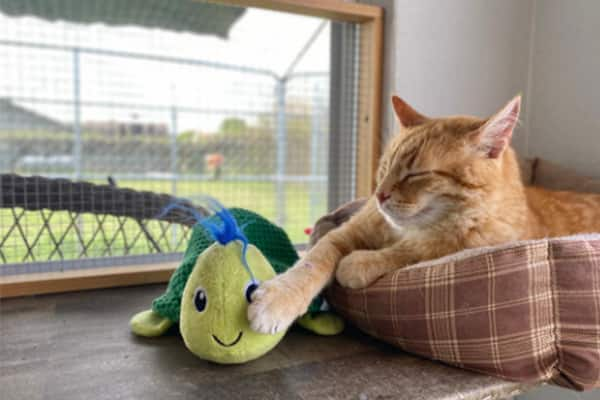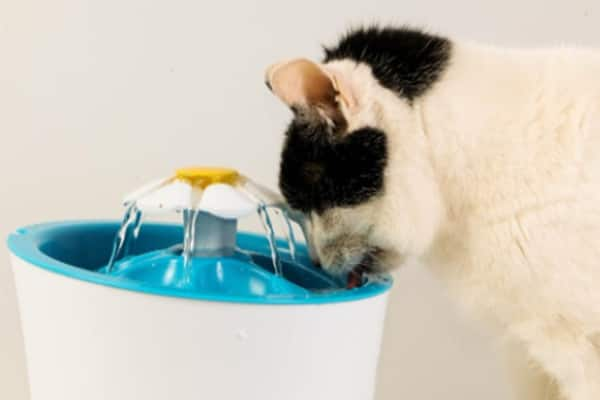

"Old age isn't a disease" is an oft-repeated phrase favored by professors throughout the entirety of veterinary school — and for good reason. Despite the best intentions, many pet parents dismiss or accept what they believe to be expected changes associated with aging without realizing that many signs of aging in cats are actually signs of disease. This is why veterinarians are trained to look beyond senior status to identify specific conditions that, with the right treatment and management, can improve your pet's quality of life.
But how old is a senior cat, exactly, and what can you expect as they navigate their golden years? Here's what you should know about how cats show their age as well as tips for caring for your senior cat.
When Is a Cat Considered a Senior?
In general, cats older than 10 are considered seniors. While your vet may start conducting "senior exams" on your cat around 7 years of age to identify concerns early, a cat's major life stages are generally categorized as follows:
Kitten: Up to 1 year old
Young adult: 1 to 6 years old
Mature adult: 7 to 10 years old
Above 10 years old

How to Tell How Old a Cat Is
Knowing your cat's life stage helps you provide your cat with the best possible care. But what if you're unsure how old your cat is? While there's no way to be exactly sure, a number of physical and behavioral clues — including teeth, coat, eyes, skin elasticity, overall body condition, energy level and mobility — can help your vet estimate your cat's age. Since a cat's individual health and care history impact their aging process, however, this isn't always a clear-cut answer.
Signs of Aging in Cats
Senior cats can show their age in a number of ways. Keep in mind that some of these signs can overlap with disease processes, so it's important to discuss your cat's physical and behavioral changes with your vet.
Activity Level
As cats age, it's normal for their bodies to need more rest. While they may spend more time perfecting their cat nap skills, normal aging does not mean lethargy, a sudden or dramatic decrease in activity, stiffness or reduced ability to jump. These signs indicate it's time to have your cat evaluated.
Eyes and Vision
As fibers in the lens of the eye condense with age, you may notice some cloudiness or a blue-gray haze in your cat's eyes. This normal, age-related change is called lenticular sclerosis — different from cataracts in cats, which impede vision and require management. Signs of compromised vision include bumping into things, appearing confused or showing new cautious behavior, such as hesitation near stairs
Skin Condition
Your cat's skin may sag slightly and become less elastic as their collagen levels decline.
Coat Appearance
As cats spend more time resting and less time grooming, their coat may appear more oily or matted, sometimes with small amounts of dandruff.
Oral Health
Dental issues, such as tartar accumulation and gum disease in cats, become more common with age. However, this isn't something to ignore as an inevitable consequence of aging. Regular dental care throughout your cat's life, including professional dental cleanings, can help prevent or reduce oral changes associated with aging and support longevity.
Partner With Your Vet
It's worth emphasizing that signs such as disorientation, changes in sleeping patterns (such as no longer sleeping through the night), increased vocalization (especially at night) and litter box accidents are not considered normal signs of aging in cats and warrant a vet visit. These signs can indicate conditions such as feline cognitive dysfunction syndrome or osteoarthritis, which require specific care and management.
Even with this information, it can be challenging for pet parents to filter normal aging changes from disease-related changes in cats. Leave the diagnosis to your vet. In addition to routine examinations, baseline diagnostics can help detect trends and identify diseases before your cat exhibits clinical signs. Increased vet visit frequency is key to early disease intervention and treatment in senior cats. In general, cats should be examined every six months starting at age 10. Once your cat reaches 15 years old, your vet may recommend more frequent visits, such as every four months.

Beyond veterinary care, you can take steps to support your senior cat at home. Here are some general tips:
Keep an eye on your cat's appearance and behaviors, including mobility, gait, and eating and elimination habits.
Monitor your senior cat's weight. A change in weight in either direction can foreshadow a number of illnesses.
Consider grooming your cat to improve circulation, remove flaky skin, prevent mats and reduce stress.
Place ramps around the house if your cat has difficulty jumping or climbing stairs. Remember to consult your vet with any mobility concerns.
Encourage healthy hydration by providing multiple water sources, offering a circulating water fountain or incorporating wet food.
Ask your vet about an easily digestible food containing antioxidants and omega-3 fatty acids to support brain and joint health.
Help keep your cat's cognitive and physical function sharp with environmental enrichment, such as interactive toys, perches and scratching posts.
Your Cat's Age Is Information, Not a Diagnosis
Remember: Old age isn't a disease. Just because you have an "old cat" doesn't mean they have to live with pain or discomfort. Your cat's age should help inform their care, not determine their quality of life. While slowing down and spending more time sleeping is normal for senior cats, other signs typically attributed to aging in cats may be attributed to treatable disease.
Cats age on a quicker timeline than humans do, making increased vet examinations and lab work valuable to health and longevity during the senior years. From monthly injections to relieve osteoarthritis pain to advances in therapeutic nutrition to interactive food puzzles designed to keep cats engaged, there are more preventives and solutions to support quality of life than ever before. There's never been a better time to be a cat!






















